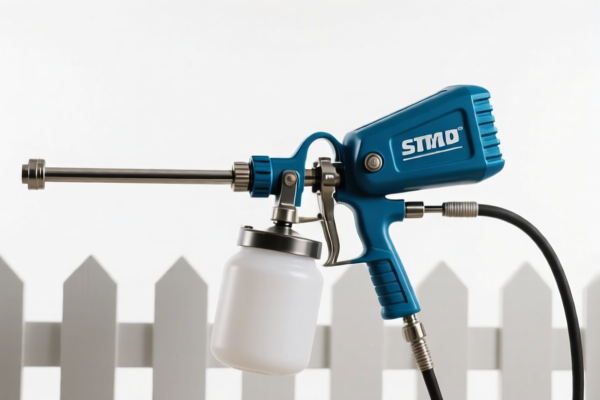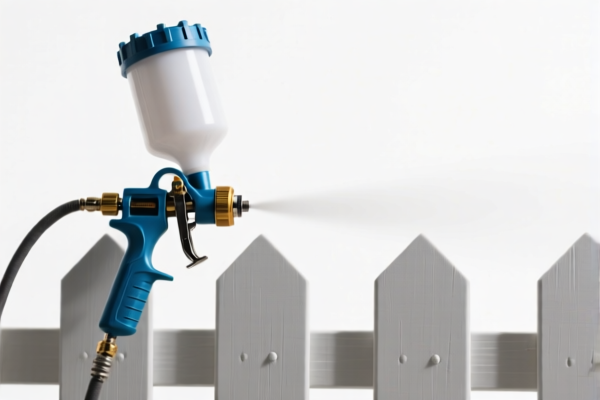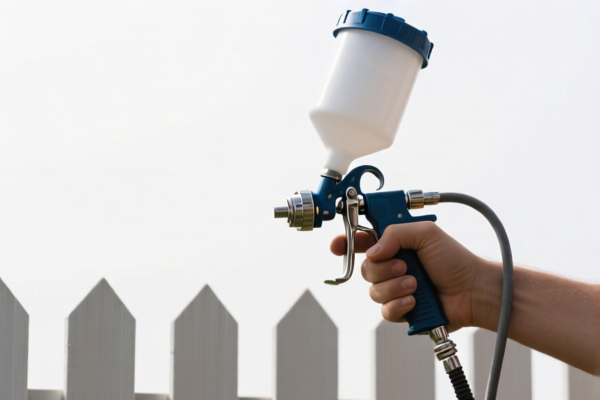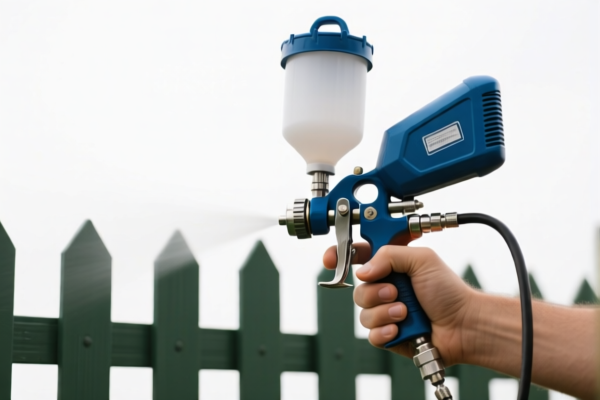| HS Code | Official Doc | Tariff Rate | Origin | Destination | Effective Date |
|---|---|---|---|---|---|
| 8424209000 | Doc | 55.0% | CN | US | 2025-05-12 |
| 8424490000 | Doc | 57.4% | CN | US | 2025-05-12 |
| 3208900000 | Doc | 58.2% | CN | US | 2025-05-12 |
| 3209100000 | Doc | 60.1% | CN | US | 2025-05-12 |
| 3209900000 | Doc | 60.9% | CN | US | 2025-05-12 |




Fence Paint Sprayer
A fence paint sprayer is a tool designed for the efficient application of paint, stain, or sealant to fences. These sprayers offer a faster and more uniform coating compared to traditional brush or roller methods, particularly for large fence areas.
Material
Fence paint sprayers are constructed from a variety of materials, impacting durability and suitability for different paint types:
- Plastic: Commonly used for the sprayer body and components, offering lightweight construction and resistance to corrosion from water-based paints. Lower-cost models frequently utilize more plastic.
- Metal (Aluminum, Stainless Steel): Found in higher-end models, providing increased durability and compatibility with a wider range of coatings, including oil-based paints and stains. Metal components are essential for handling solvents and higher pressures.
- Brass: Often used for nozzles and internal components due to its corrosion resistance and precision.
- Hoses: Typically made of reinforced rubber or PVC, designed to withstand pressure and chemical exposure.
Purpose
The primary purpose of a fence paint sprayer is to apply a protective and aesthetic coating to fences. This includes:
- Protection: Shielding the fence wood (or other material) from weather damage, rot, insect infestation, and UV degradation.
- Aesthetics: Renewing the appearance of the fence with a fresh coat of paint or stain.
- Speed & Efficiency: Significantly reducing application time compared to manual methods, especially for large fences.
- Uniformity: Achieving a consistent coat thickness and finish.
Function
Fence paint sprayers function by atomizing liquid coatings into fine droplets and propelling them onto the fence surface. Key functional components include:
- Paint Reservoir: Holds the paint, stain, or sealant. Capacity varies significantly between models.
- Pump: Creates the pressure necessary to atomize and propel the coating. Pump types include:
- Airless: Uses high pressure (typically 1500-3000 PSI) to force paint through a nozzle without the need for compressed air. Common for larger projects and thicker coatings.
- HVLP (High Volume Low Pressure): Requires an external air compressor. Produces a finer mist with less overspray, suitable for detailed work and thinner coatings.
- Air-Assisted Airless: Combines airless technology with compressed air for improved atomization and reduced overspray.
- Nozzle: Determines the spray pattern (horizontal, vertical, fan-shaped) and flow rate. Interchangeable nozzles allow for customization.
- Trigger: Controls the flow of paint.
- Hose: Delivers the paint from the pump to the spray gun.
Usage Scenarios
- New Fence Painting/Staining: Applying the initial protective coating to a newly constructed fence.
- Fence Refinishing: Restoring the appearance and protection of an existing fence.
- Large Fences: Ideal for fences exceeding 100 linear feet, where brush or roller application would be time-consuming.
- Commercial Applications: Used by professional painters for efficient fence coating on residential or commercial properties.
Common Types
- Airless Sprayers: The most common type for fence painting due to their speed and ability to handle various paint types. Often used with thicker paints and stains. Require careful masking to prevent overspray.
- HVLP Sprayers: Suitable for thinner coatings and detailed work. Require an air compressor and produce less overspray but may be slower for large areas.
- Electric Paint Sprayers: Convenient and easy to use, often employing HVLP technology. Suitable for smaller to medium-sized fences.
- Gas-Powered Paint Sprayers: Offer portability and power for large projects, often utilizing airless technology.
- Paint Sprayer Backpacks: Designed for increased portability and convenience, particularly for large fences or difficult terrain. Typically utilize electric pumps.
- Handheld Paint Sprayers: Small, manual sprayers suitable for touch-ups or very small fence sections.
The declared goods, “fence paint sprayer”, refer to a mechanical appliance used for projecting liquids, specifically paint, onto surfaces like fences. It is likely a hand-operated or powered device designed for applying coatings.
The following HS codes are relevant based on the provided information:
- 8424209000: This HS code covers mechanical appliances (whether or not hand operated) for projecting, dispersing or spraying liquids or powders. Specifically, it includes spray guns and similar appliances, categorized as 'Other'. This is a broad category encompassing various types of spray application equipment. The total tax rate is 55.0%, comprised of a 0.0% base tariff and a 25.0% additional tariff, increasing to 30.0% after April 2, 2025.
- 8424490000: This HS code covers agricultural or horticultural sprayers, categorized as 'Other'. While 'fence paint sprayer' isn't explicitly agricultural, it could fall under this category if used in farm or garden settings. The total tax rate is 57.4%, comprised of a 2.4% base tariff and a 25.0% additional tariff, increasing to 30.0% after April 2, 2025.
- 3208900000: This HS code covers paints and varnishes (including enamels and lacquers) based on synthetic polymers or chemically modified natural polymers, dispersed or dissolved in a nonaqueous medium; solutions as defined in note 4 to this chapter, categorized as 'Other'. If the 'fence paint sprayer' is being declared with the paint itself, and the paint is based on synthetic polymers in a non-aqueous medium, this code may be relevant. The total tax rate is 58.2%, comprised of a 3.2% base tariff and a 25.0% additional tariff, increasing to 30.0% after April 2, 2025.
- 3209100000: This HS code covers paints and varnishes (including enamels and lacquers) based on synthetic polymers or chemically modified natural polymers, dispersed or dissolved in an aqueous medium; solutions as defined in note 4 to this chapter, specifically those based on acrylic or vinyl polymers. If the paint being used with the sprayer is water-based and based on acrylic or vinyl polymers, this code may be relevant. The total tax rate is 60.1%, comprised of a 5.1% base tariff and a 25.0% additional tariff, increasing to 30.0% after April 2, 2025.
- 3209900000: This HS code covers paints and varnishes (including enamels and lacquers) based on synthetic polymers or chemically modified natural polymers, dispersed or dissolved in an aqueous medium, categorized as 'Other'. If the paint being used with the sprayer is water-based but not based on acrylic or vinyl polymers, this code may be relevant. The total tax rate is 60.9%, comprised of a 5.9% base tariff and a 25.0% additional tariff, increasing to 30.0% after April 2, 2025.
It is important to determine whether the declaration includes the sprayer alone or the sprayer with the paint. If declaring the paint alongside the sprayer, carefully consider the paint's composition (aqueous or non-aqueous medium, polymer base) to select the correct HS code.
Customer Reviews
No reviews yet.